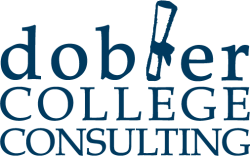College Planning Timeline
There’s a lot to do along the way from the time when you go online to research that first college of interest to May 1st of your senior year in high school when you commit to the college where you will enroll. And, like any journey, it’s always helpful to have a plan. The following master plan is intended to be a general map of what to do throughout your four years in high school to ensure that things go as smoothly for you as they can.
FRESHMAN YEAR
*Develop your time management and study skills.
*Explore and engage with extracurricular activities (e.g., clubs, sports, community service, fine and performing arts, work, and other in-or out-of-school activities) that align with your interests, values, and strengths.
*Create an honors and activity list to track all your honors, awards, accolades, extracurricular activities, summer experiences, and other achievements.
*Start building a relationship with your school counselor by talking to them about classes, your goals, clubs, activities, etc.
*Parents: Start exploring how to pay for college.
*Athletes: Familiarize yourself with the NCAA athletic recruiting requirements.
*Plan a summer experience that helps you explore a passion or interest.
SOPHOMORE YEAR
*Complete a personality and interests assessment to learn more about your values, interests, strengths, and learning style. Use the results to explore possible majors and career paths.
*Continue participating in extracurricular activities. See if you can deepen your involvement or take on a leadership role in the activities you’ve already been doing. Alternatively, step outside your comfort zone and try something new.
*Update your honors and activity list.
*Stay focused on keeping your grades up.
*Take the October PSAT.
*Attend a local college fair in the second half of sophomore year to start gathering information on colleges.
*Meet with your school counselor at least once a year to discuss course selection. Continue building this relationship by asking questions about new courses and suggestions for ways to develop your interests.
*Explore possible college majors and careers further by arranging for a job shadow or informational interview.
*Visit a local college or two to begin identifying what characteristics stand out to you.
*Athletes: Let your high school counselor know you’re considering college athletics and register for the National Collegiate Athletic Association (NCAA) Clearinghouse. Then double-check that all of your courses are NCAA-approved. Not all high school courses count towards their requirements.
*Athletes: Complete online athletic recruitment forms for each college you're considering. You'll find these on the college's website under "athletics." Once you’ve completed the online recruitment forms, make your sports resume and recruitment videos. Spread out your correspondence with coaches by sending the resumes and video a few weeks after you complete the online forms.
JUNIOR YEAR
Fall:
*Start a preliminary list of colleges to visit.
*Schedule a meeting with your school counselor to discuss the colleges you are interested in. Tell them about your college preferences and ask for their suggestions of colleges that might be a good fit for you. Doing so helps you continue to develop your relationship with your counselor.
*Take the October PSAT. This test qualifies students for the National Merit Scholarship. While you wait for results to be released in December, take a practice ACT and to determine which test may be better for you; then set up a testing timeline.
*Research and visit colleges on your college list.
*Stay consistent with your non-academic extracurricular activities if your values and priorities haven’t changed. If they have, try something new. Continue to look for ways to explore and deepen your interests in these activities. Try a leadership role if you haven’t already.
*Continue to update your honors and activity list.
*Athletes: Continue completing online athletic recruitment forms for each college you're considering and sending correspondence to coaches a few weeks after you complete the online forms.
Winter:
*Research and submit applications for any relevant summer programs.
*Prepare for SAT and/or ACT tests in March, April, May, and June. Register for senior year classes. Remember colleges will want to see a strong senior year course load including five academic core classes.
*Continue visiting colleges and refine your college list based on your values and your research.
Spring:
*Attend local college fairs to meet college reps and ask questions that will help you (A) demonstrate interest and (B) start to narrow down your college list.
*Prepare for SAT and/or ACT tests in May, and June.
*Brainstorm ideas for your college essay and then work on subsequent drafts so that you have an essay in progress before the summer hits.
*Prepare for May AP tests.
*Request at least two teacher recommendations, preferably from current 11th grade teachers.
Summer:
*Start working on your Common App by filling out the six main pages of information.
*Participate in summer experiences (research, reading, internships, fun stuff).
*Continue narrowing down your college list so that you have a final list in place before the end of July. Be sure it reflects a balance of admission probabilities (likely, possible, and reach schools).
*Research your colleges’ requirements to see if an interview is offered or required. Interviews will typically be offered over the summer and into the fall.
*Make decisions about any Early Action and, where appropriate, Early Decision, applications. Set up a timeline for yourself based on all of your colleges’ application deadlines.
*Prepare for SAT and/or ACT tests in August, September, and October.
*Complete the Common Application after it opens for the new academic year in early August.
*Visit any colleges on your list that you have yet to see, especially if it will help you decide if you really want to apply or not.
*Start working on applications and supplements due in October.
SENIOR YEAR
September:
*Complete and submit applications and supplements due in October.
*Start working on applications and supplements due in November.
*Prepare for SAT and/or ACT tests in October.
*Complete any additional visits or attend open houses to ask any last minute questions of college reps.
*Schedule interviews with college reps who will be in your area.
*Parents: Start preparing financial aid paperwork and develop a deadlines list.
October:
*Complete and submit applications and supplements due in November.
*Start working on applications and supplements due in December.
*Complete any additional visits or attend open houses to ask any last minute questions of college reps.
*Schedule interviews with college reps who will be in your area.
*Send SAT or ACT results to your colleges after checking whether they allow self-reported scores.
*Parents: Where applicable, complete the FAFSA and CSS/PROFILE financial aid applications.
November, December, and January:
*Complete and submit applications and supplements due in December and January.
*Start working on applications and supplements due in February.
*Search and apply for private scholarships.
*If deferred, respond accordingly based on the college’s directions to reaffirm your interest and offer any updates (activities, achievements, awards, etc).
February, March and April:
*Search and apply for private scholarships.
*Plan visits to accepted colleges, especially admitted student events, when possible to make your final college choice.
*Evaluate financial aid packages and scholarship offerings to figure out how to pay for college.
*Make final decision on which college you will attend ahead of May 1st and then withdraw applications from all other colleges.
The college admissions journey is an important milestone in a student’s life, and one that is highly personalized. We hope that you will choose to partner with a DCC College Advisor during this journey. We can provide expert guidance in each of the steps presented in this timeline, customizing the tasks to the individual needs and strengths of the student.



 With application season upon us, high college seniors everywhere are working on the
With application season upon us, high college seniors everywhere are working on the